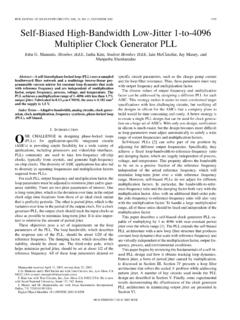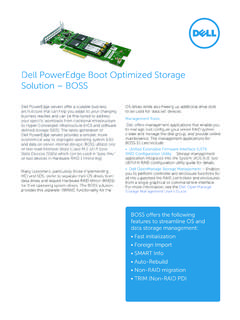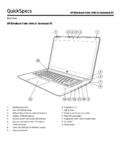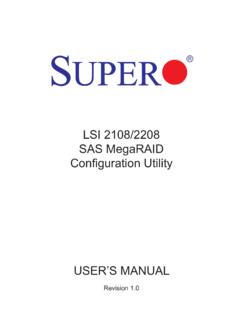Transcription of CMOS Active Pixel Image Sensors for Highly Integrated ...
1 IEEE JOURNAL OF solid -STATE CIRCUITS, VOL. 32, NO. 2, FEBRUARY 1997 187. CMOS Active Pixel Image Sensors for Highly Integrated imaging Systems Sunetra K. Mendis, Member, IEEE, Sabrina E. Kemeny, Member, IEEE, Russell C. Gee, Member, IEEE, Bedabrata Pain, Member, IEEE, Craig O. Staller, Quiesup Kim, Member, IEEE, and Eric R. Fossum, Senior Member, IEEE. Abstract A family of CMOS-based Active Pixel Image Sensors Charge-coupled devices (CCD's) are currently the dominant (APS's) that are inherently compatible with the integration of on- technology for Image Sensors . CCD arrays with high fill-factor, chip signal processing circuitry is reported.
2 The Image Sensors small Pixel sizes, and large formats have been achieved and were fabricated using commercially available 2- m CMOS pro- cesses and both p-well and n-well implementations were explored. some signal processing operations have been demonstrated The arrays feature random access, 5-V operation and transistor- with charge-domain circuits [1] [3]. However, CCD's cannot transistor logic (TTL) compatible control signals. Methods of be easily Integrated with CMOS circuits due to additional on-chip suppression of fixed pattern noise to less than fabrication complexity and increased cost. Also, CCD's are saturation are demonstrated.
3 The baseline design achieved a Pixel size of 40 m2 40 m with 26% fill-factor. Array sizes of 28 2. high capacitance devices so that on-chip CMOS drive electron- 28 elements and 128 2 128 elements have been fabricated and ics would dissipate prohibitively high power levels for large characterized. Typical output conversion gain is V/e0 for the area arrays (2 3 W). Furthermore, CCD's need many different p-well devices and V/e0 for the n-well devices. Input referred voltage levels to ensure high charge transfer efficiency. The read noise of 28 e0 rms corresponding to a dynamic range readout rate is limited due to the inherent sequential read out of of 76 dB was achieved.
4 Characterization of various photogate CCD's and the need to achieve nearly perfect charge transfer Pixel designs and a photodiode design is reported. Photoresponse variations for different Pixel designs are discussed. efficiency to maintain signal fidelity. CCD's also suffer from smear and susceptibility to radiation damage. Index Terms Active Pixel sensor , cameras, CMOS Image sen- sor. An Active Pixel Image sensor is defined as an Image sensor technology that has one or more Active transistors within the Pixel unit cell [4]. This is in contrast to a passive Pixel . I. INTRODUCTION approach that uses a simple switch to connect the Pixel signal charge to the column bus capacitance [5].
5 Active Pixel I N many imaging systems, integration of the Image sensor with circuitry for both driving the Image sensor and per- forming on-chip signal processing is becoming increasingly Sensors promise lower noise readout, improved scalability to large array formats, and higher speed readout compared to important. A high degree of electronics integration on the passive Pixel Sensors . Previously demonstrated Active Pixel focal-plane can enable miniaturization of instrument systems sensor (APS) technologies include the amplified MOS imager and simplify system interfaces. In addition to good imaging (AMI) [6], charge modulation device (CMD) [7], bulk charge performance with low noise, no lag, no smear, and good modulated device (BCMD) [8], base stored Image sensor blooming control, it is desirable to have random access, simple (BASIS) [9], and the static induction transistor (SIT) [10].
6 Clocks, and fast readout rates. The development of a CMOS- Although AMI's are both CMOS-compatible and amenable to compatible Image sensor technology is an important step for integration with on-chip circuitry, noise levels and lag can be a Highly Integrated imaging systems since CMOS is well suited problem due to the uncorrelated reset operation [11]. CMD's, for implementing on-chip signal processing circuits. CMOS is BCMD's, and BASIS are also amenable to integration with on- also a widely accessible and well-understood technology. chip circuitry, but can be made CMOS-compatible only with additional fabrication steps. SIT's are difficult to integrate with Manuscript received June 20, 1994; revised August 20, 1996.
7 This work was on-chip circuitry and are not CMOS-compatible. supported by the JPL Director's Discretionary Fund, the Advanced Research Projects Agency, and the National Aeronautics and Space Administration, The CMOS Active Pixel Sensors described in this paper are Office of Advanced Concepts and Technology. inherently CMOS-compatible. Each Pixel unit cell contains an S. K. Mendis was with the Jet Propulsion Laboratory, California Institute imaging element and three transistors for readout, selection, of Technology, Pasadena, CA 91109 USA. She is now with Hewlett Packard, Palo Alto, CA 94304 USA. and reset. The imager is read out a row at a time using a S.
8 E. Kemeny and E. R. Fossum were with Jet Propulsion Laboratory, column parallel readout architecture. The major innovation California Institute of Technology, Pasadena, CA 91109 USA. They are now reported in this paper is the use of intrapixel charge transfer with Photobit, La Crescenta, CA 91214 USA. R. C. Gee was with Jet Propulsion Laboratory, California Institute of to allow correlated-double-sampling (CDS) and on-chip fixed Technology, Pasadena, CA 91109 USA. He is now with Intel, Santa Clara, pattern noise (FPN) suppression circuitry located in each CA 95052 USA. column. These innovations will allow, for the first time, B. Pain, C.
9 O. Staller, and Q. Kim are with the Jet Propulsion Laboratory, California Institute of Technology, Pasadena, CA 91109 USA. a CMOS Image sensor to achieve low noise performance Publisher Item Identifier S 0018-9200(97)01349-8. comparable to a CCD. In all the designs, random access is 0018 9200/97$ 1997 IEEE. 188 IEEE JOURNAL OF solid -STATE CIRCUITS, VOL. 32, NO. 2, FEBRUARY 1997. TABLE I. TRANSISTOR AND CAPACITOR SIZES. (a). and FPN suppression schemes are presented in Section IV. Section V describes the different Pixel unit cell designs ex- plored and compares their performance with the baseline design. II. THE BASELINE CMOS APS. A. Design A schematic of the baseline Pixel design and readout circuit (b) used in the CMOS APS arrays is shown in Fig.
10 1(a). The Pixel unit cell is shown within the dotted outline. The imaging Fig. 1. (a) Schematic of readout circuit and (b) timing for CMOS APS read out. structure consists of a photogate (PG) with a floating diffusion output (FD) separated by a transfer gate (TX). In essence, a small surface-channel CCD has been fabricated within each possible, allowing selective readout of windows of interest. Pixel . The Pixel unit cell also contains a reset transistor (MR), The Image Sensors are operated with transistor-transistor logic the input transistor of the in- Pixel source-follower (MIN), and (TTL) clocks and at most two other dc voltages. These a row selection transistor (MX).











